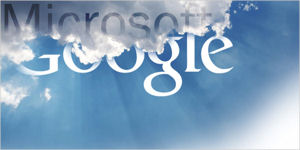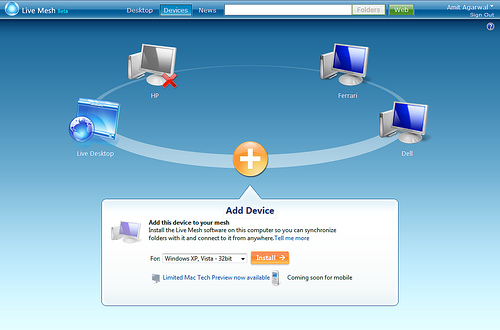Cloud Computing
 All cloud computing means is instead of working with files and folders stored on your hard drive, you're working on files and folders stored on servers that you access with your Web browser.
All cloud computing means is instead of working with files and folders stored on your hard drive, you're working on files and folders stored on servers that you access with your Web browser.
Cloud computing is the latest buzz phrase. All cloud computing means is instead of working with files and folders stored on your hard drive, you're working on files and folders stored on servers that you access with your Web browser. Google Docs is a good example of a cloud computing platform. You can sign up for Google Docs and Google will give you space on their servers for free where you can store and edit documents like text files and spreadsheets etc.  Google has been offering this free Cloud computing service since February 2007. Microsoft has decided that the future of computing is in the cloud and so they too have recently introduced a number of free to use cloud based platforms. I've written about two of them in previous posts. One is called Windows SkyDrive and the other is called Windows Live Sync. Even more recently, Microsoft has introduced a more ambitious cloud computing platform called Windows Live Mesh.
Google has been offering this free Cloud computing service since February 2007. Microsoft has decided that the future of computing is in the cloud and so they too have recently introduced a number of free to use cloud based platforms. I've written about two of them in previous posts. One is called Windows SkyDrive and the other is called Windows Live Sync. Even more recently, Microsoft has introduced a more ambitious cloud computing platform called Windows Live Mesh.

 Soon Microsoft will add the ability to allow you to add any kind of mobile device to your Mesh. Data and programs from any of the devices in your Mesh are available to you regardless of where you are as long as you have an Internet connection. For now, Microsoft gives you five gigabytes of free storage space. That means that you have enough room to store hundreds of large files on Microsoft's servers. All you have do to access these files is to log-in to your account with your email address and password. You can work with any of those hundreds of files with any computer with Internet access anywhere in the world. And when you get back to your home computer or your work computer, those files will reflect the changes you made to them at your remote location. Using Windows Live Mesh's Remote Desktop is a great way get work done even when you're far away from your office computer.
Soon Microsoft will add the ability to allow you to add any kind of mobile device to your Mesh. Data and programs from any of the devices in your Mesh are available to you regardless of where you are as long as you have an Internet connection. For now, Microsoft gives you five gigabytes of free storage space. That means that you have enough room to store hundreds of large files on Microsoft's servers. All you have do to access these files is to log-in to your account with your email address and password. You can work with any of those hundreds of files with any computer with Internet access anywhere in the world. And when you get back to your home computer or your work computer, those files will reflect the changes you made to them at your remote location. Using Windows Live Mesh's Remote Desktop is a great way get work done even when you're far away from your office computer. shows you whether the other people who share your folders are online or offline by integrating status information from Windows Live Messenger. It also shows you when other members are viewing or editing the content. You can keep up with what your "meshed" contacts are doing (such as making changes to a folder or adding comments) by using the News view in the Live Mesh Bar as shown here.
shows you whether the other people who share your folders are online or offline by integrating status information from Windows Live Messenger. It also shows you when other members are viewing or editing the content. You can keep up with what your "meshed" contacts are doing (such as making changes to a folder or adding comments) by using the News view in the Live Mesh Bar as shown here. Add this page to your Favorites and keep checking back so you won't miss "How to Create a Web Page - Part Two" or any of the other upcoming posts soon to appear on the Scoroncocolo Tech Pages.
Add this page to your Favorites and keep checking back so you won't miss "How to Create a Web Page - Part Two" or any of the other upcoming posts soon to appear on the Scoroncocolo Tech Pages.